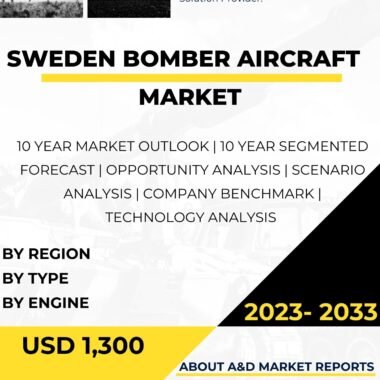Description
The bomber aircraft market in Singapore is relatively limited due to the country’s defense strategy and regional security environment. As a small and highly urbanized nation in Southeast Asia, Singapore places a strong emphasis on diplomacy, maintaining a credible deterrent posture, and collaborating with regional partners to promote stability and security. While Singapore does not possess its own bomber aircraft capabilities, it actively engages in defense cooperation and seeks advanced aircraft for other military roles.
Singapore’s defense strategy focuses on deterrence, meaning that the country seeks to prevent potential adversaries from considering aggressive actions by demonstrating a robust and credible defense capability. This strategy is achieved through a combination of advanced defense systems, a well-trained and professional military force, and international partnerships.
The Singaporean government’s approach to defense has traditionally been focused on developing a capable, agile, and technologically advanced military. While Singapore does not pursue bomber aircraft development, it invests in other key areas of defense, such as naval and air capabilities, cyber security, and counter-terrorism.
Singapore maintains a modern and capable Air Force, equipped with advanced fighter aircraft, transport aircraft, and other platforms. The Republic of Singapore Air Force (RSAF) operates various types of aircraft, including F-15SG and F-16C/D fighter jets, which serve as the primary means of protecting Singapore’s airspace.
The RSAF’s primary mission is to safeguard Singapore’s airspace and maintain air sovereignty. The use of advanced fighter aircraft allows the RSAF to respond swiftly to potential threats and secure the country’s territorial integrity.
In addition to fighter aircraft, Singapore’s Air Force operates transport and utility aircraft, such as the C-130 Hercules, to support various military operations, including humanitarian assistance and disaster relief missions.
While Singapore does not possess bomber aircraft, it actively collaborates with other countries through defense partnerships and multinational forums. Singapore is a member of the Five Power Defense Arrangements (FPDA), a regional defense pact that includes Australia, Malaysia, New Zealand, and the United Kingdom. The FPDA fosters regional security and cooperation, aiming to deter potential aggression in Southeast Asia.
Singapore also engages in defense cooperation with other countries, including the United States, through various joint exercises and training programs. These collaborations aim to enhance interoperability, promote military-to-military ties, and support Singapore’s defense modernization efforts.
Singapore’s strategic location in Southeast Asia and its status as a major global trade hub underscore the importance of safeguarding maritime and air routes. To address these needs, Singapore maintains a modern and capable Navy and Air Force, equipped with advanced naval vessels, aircraft, and missile defense systems.
While Singapore does not possess bomber aircraft, it actively engages in maritime security efforts. The Republic of Singapore Navy (RSN) operates a fleet of naval vessels, including frigates and patrol vessels, to safeguard Singapore’s territorial waters and maritime interests.
The focus on enhancing air and naval capabilities is consistent with Singapore’s commitment to maintaining a strong and credible defense posture, even without possessing bomber aircraft. The country’s investment in other critical military capabilities enables it to contribute to regional security and stability effectively.
Singapore also participates in regional forums and initiatives, such as the ASEAN Defence Ministers’ Meeting (ADMM) and the ADMM-Plus, which promote dialogue and cooperation among Southeast Asian countries and their partners to address common security challenges.
As the global security landscape evolves, Singapore’s investment in advanced fighter aircraft and other military assets will continue to play a vital role in maintaining the country’s security and strategic interests. The ongoing focus on research, development, and indigenous defense production ensures that Singapore’s military is equipped with the best available technologies to meet the challenges of the future.
In conclusion, the bomber aircraft market in Singapore is limited due to the country’s defense strategy and regional security environment. Singapore focuses on maintaining a credible defense posture through a combination of advanced fighter aircraft, naval vessels, missile defense systems, and international defense partnerships. While bomber aircraft are not part of Singapore’s defense capabilities, the country actively collaborates with other nations and participates in regional security efforts to promote stability and security in the Asia-Pacific region.




